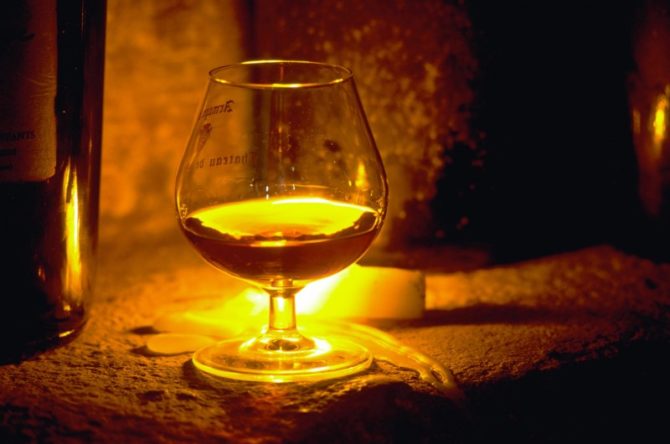Forever Amber: Cognac, Armagnac and Calvados

When it comes to brandies, nothing competes with France’s amber trio; cognac, armagnac and calvados, each a pure product of its own terroir. Cognac comes from a sector of chalky soil near the town it’s named for, in the Charentes region north of Bordeaux. The area’s white wines were little more than swill for British seamen until double-distillation was tried in the 17th century. Now double-distilled in gleaming onion dome-shaped vats, cognac is aged in barrels of Limousin or Tronçais oak. If the Cognac area is visualized in concentric circles, the finest quality, Grande Champagne, is the bull’s-eye.
Armagnac’s territory lies south of the Garonne river in the Midi-Pyrénées region once known as Gascony, of Musketeer fame. Made with white wine from three areas—in ascending order of excellence, Haut-Armagnac, Ténarèze and Bas Armagnac—it’s produced in complicated stills known as alambics using a distinct, continuous-distillation process, and aged in oak. Racy armagnac is dry and velvety smooth, with a generous aroma and a long-lasting flavour.
Apple orchards replace vineyards in Normandy, where calvados, familiarly called calva, was named after one of the departments in which it’s made—double-distilled from apple mash fermented with yeast. First recorded in the 16th century, calva is the basis of the trou Normand, the pause during a hearty meal for a nip—now often poured over apple sherbet—to aid digestion and revive the appetite.
From the France Today archives
Share to: Facebook Twitter LinkedIn Email
Leave a reply
Your email address will not be published. Required fields are marked *



